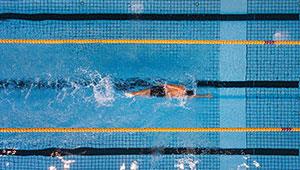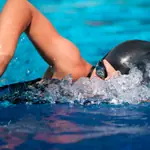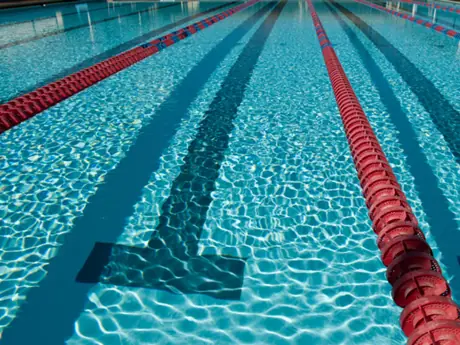Suit Up
Wetsuits aren't just for keeping you warm. The extra layer of neoprene can keep you relaxed, too, says Purdie. "Feeling more buoyant in the water can help subside your worries about drowning."
Don't have a wetsuit? No need to run out and buy one. Many online and local tri shops offer wetsuit rentals so you can take it out for a test drive before you fully commit to the sport.
More: What You Need to Know About Wetsuits
Clean and Clear
Nothing like losing your goggles to make you feel completely disoriented in the swim. To keep yours from slipping off your head, Purdie suggests securing yours over your hair—and underneath your cap. "That way, if you get hit by another swimmer, your goggles will stay on because they're protected by the cap," she says.
You may also want to race with wide-lensed goggles for a full field of view. "Test out a bunch to see what works for you," says Purdie.
Sight Right
Regardless of which goggles you choose, the best way to get a sense of where you are in the swim is sighting—or looking up to check where you are along the course. "It's easy to get confused as to where you are, especially since there's no black line to follow like a pool," says Purdie.
The key to keeping on course is sighting often. "You'll want to sight every 8 to 10 strokes," advises Jezycki. "Practice swimming while sighting so you are efficient and not going upright as you locate your next buoy." Also, picking out a landmark—like a building or a tree—along the swim course can keep you in line without having to look up so much. "Eventually you will be sighting less often and keeping good momentum," says Jezycki.
More: How to Sight Like a Professional Swimmer
Damage Control
Despite the practice and precautions, there's still a chance you'll hit a snag in the swim. And if you do? "Take a quick inventory of the extent of your condition," says Jezycki. "If you are losing your breath, switch to breaststroke or roll over on your back until you can regain your composure and get back to the forward motion."
Don't be afraid to hold onto a kayak if you have to, either. Says Jezycki, "It can be scary, but if you keep moving forward, you'll get to T1 before you know it."
More: 2 Drills to Work on Freestyle Breathing
 Search for your next triathlon.
Search for your next triathlon.
- 2
- of
- 2
About the Author

Get ACTIVE on the Go


Meet Mobile
Swim smarter: heats, lane assignments and real-time results in the palm of your hand.
Available for iOS | Android







Discuss This Article